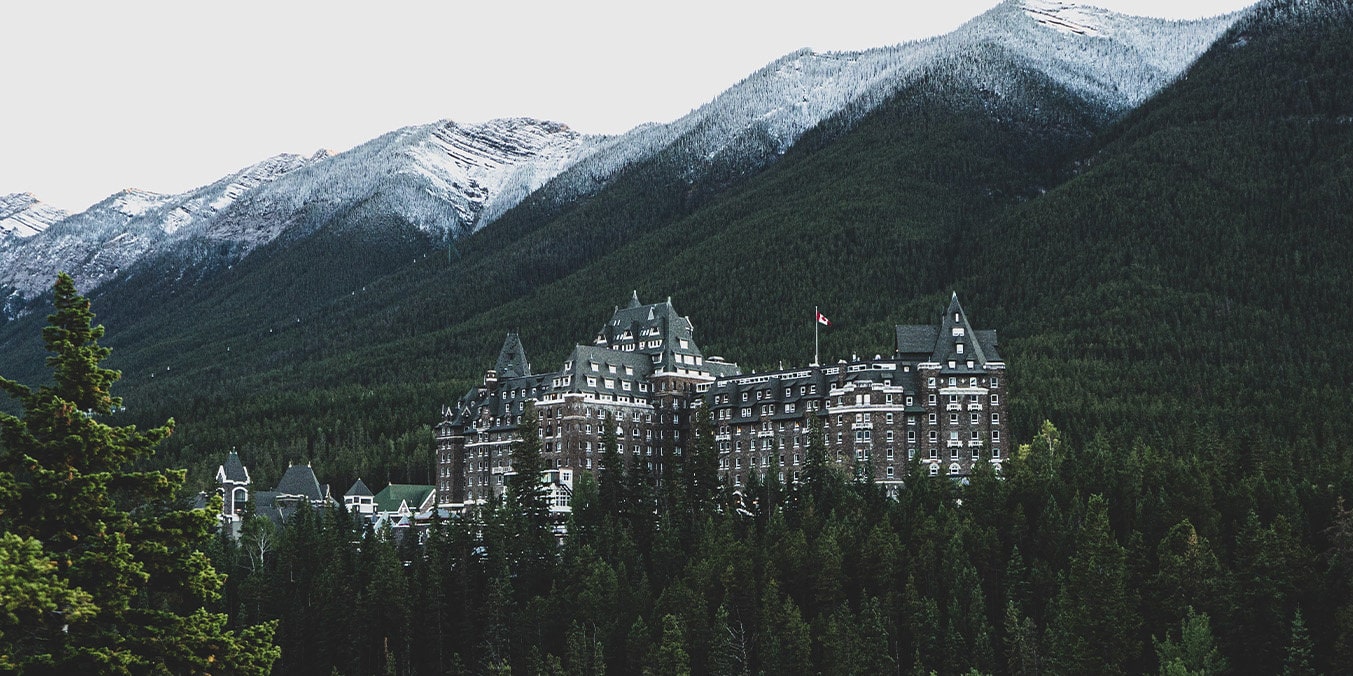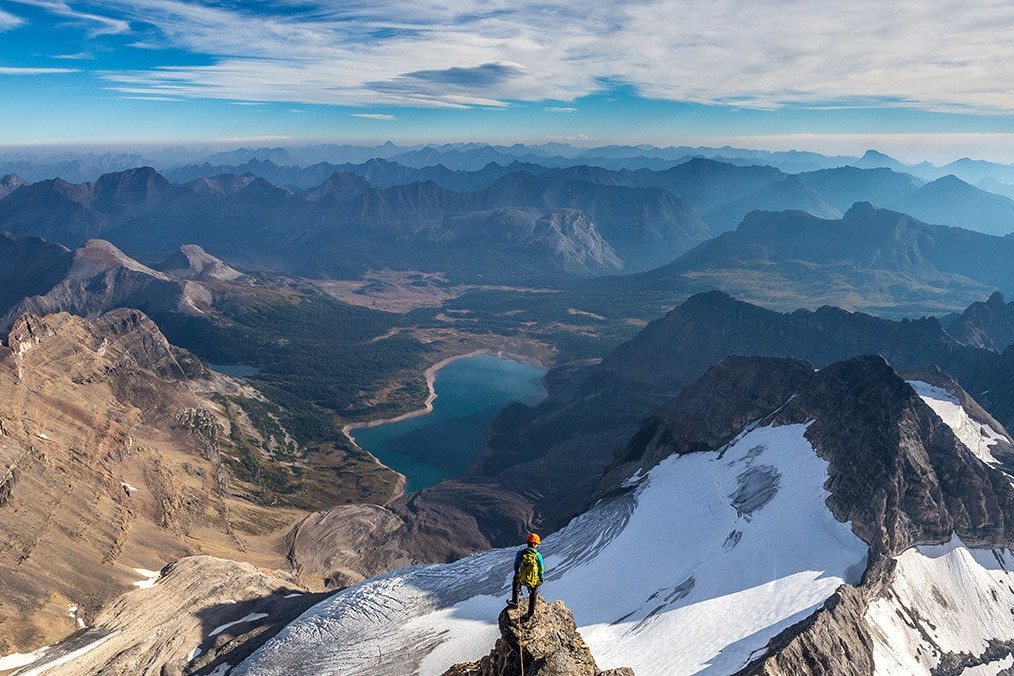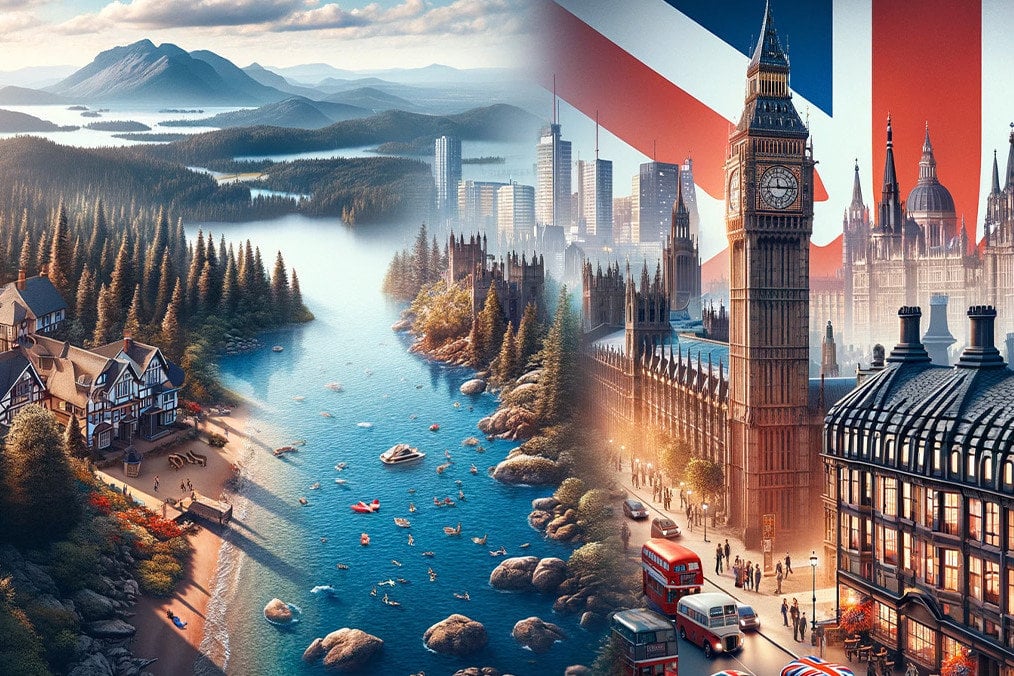Welcome to Banff! This small town in the Canadian Rockies is teeming with history and natural beauty. In this post, let us take you back with our Banff history lesson 101. From its early days to its current status as a popular tourist destination, Banff has a fascinating story to tell.
Banff history overview
The year 1883 was an outstanding one in Canadian history. Aside from the fact that Canada’s first transcontinental railroad reached completion, three railway workers discovered a series of hot springs on the lower shoulder of the current-day Sulphur Mountain.
In 1885, the springs and their surrounding regions were designated Canada’s first national park during a dispute over ownership.
The Canadian Rockies’ hidden potential was quickly revealed when the Canadian Pacific Railway was shocked by the notion that the Canadian national park might attract visitors from all over the world. This allowed for investments, which resulted in the construction of the beautiful Banff Springs Hotel, directed by William Cornelius Van Horne, in 1888.
Other hotels were built along the railway’s main route, and it was dubbed “the Steel Highway.” The next stage in Banff’s development as an international tourism destination was to promote it as a stopover on the steel highway, which had suddenly become the quickest and most direct route from Europe to Asia.
The Rockies became popular with the Victorian aristocracy, who enjoyed drinking while watching the scenery and relaxing in the soothing sulphur springs.
When skiers reach the top of our mountains, they are taken aback by the beauty of the untouched wilderness that surrounds them. When explorers and climbers from all over the world first came to the Canadian Rockies more than a century ago, they were greeted with these same vistas.
The first ascents of the peaks were made by Swiss mountain guides on wooden skis with leather bindings. Adventurers discovered untracked snow in huge open bowls, laying the groundwork for today’s sophisticated Banff/Lake Louise ski industry.
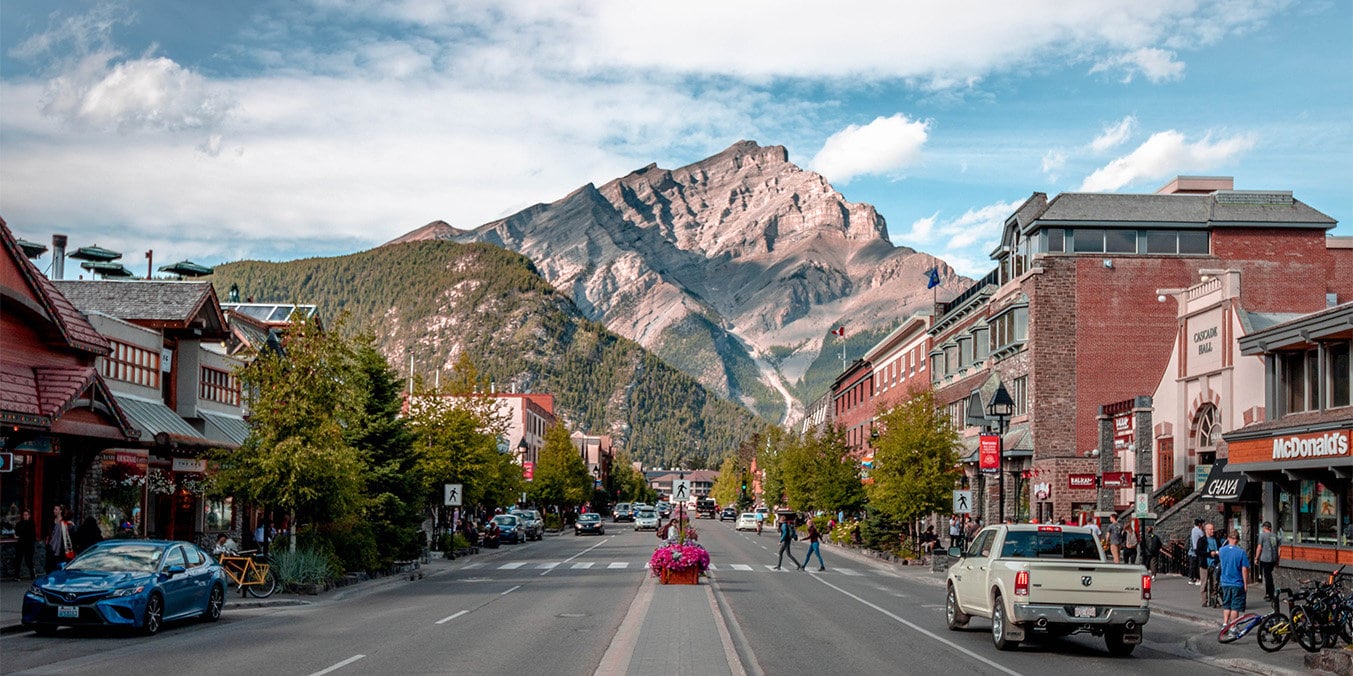
Banff history timeline
11,000 BC
Archaeologists have discovered early human settlements in regions like Lake Minnewanka’s banks and Vermilion Lakes. Valleys and passes of the Canadian Rockies were popular among the local native tribes. The Plains Blackfoot Indians and the Crees had a long history of peaceful co-existence, with regular trade and little violence.
1700's
The arrival of Europeans, along with the introduction of guns, horses, and European diseases, resulted in a power shift and bloodshed among native tribes. The introduction of smallpox reduced the indigenous population of the western Aboriginal people by three-fifths.
1754
The Canadian Rockies were first crossed by a non-native in 1754, when Anthony Henday arrived.
1800
In 1885, two hikers, David Thompson and Duncan McGillivray, set out in the Bow Valley.
1841
When Sir George Simpson, Governor of the Hudson Bay Company, passed through the Canadian Rockies on his worldwide tour, it sparked interest.
1847
The Wesleyan Missionary, Rev Robert Terrill Rundle, provided services for the local people on the shores of Lake Minnewanka.
1857-60
For the British Government, the Palliser Expedition traveled across central and western Canada. This trip was launched by an Irishman named John Palliser to see whether the territory could be colonized.
The group was divided into three parts in order to explore the contemporary day regions of Kananaskis, Banff, Kootenay Lake and Waterton Park.
The first leader in charge of Banff’s exploration, James Hector, gave many mountains of Banff their names. The Palliser Expedition redrew the map of the west, shifting political attention to the resource and settlement potential of the southern plains and mountains.
1871
As the new Canadian confederation was to be connected by a transcontinental railway, three generations of western explorers’ surveys became absolutely crucial.
1882
Tom Wilson, a Canadian Pacific Railroad packer, was the first white man to discover Lake Louise, which he did with help from a Stoney Indian. He named it Emerald Lake (later renamed Lake Louise in 1884 after the daughter of Queen Victoria).
1883
The railway was eventually built through Banff and reached Laggan Station (Lake Louise).
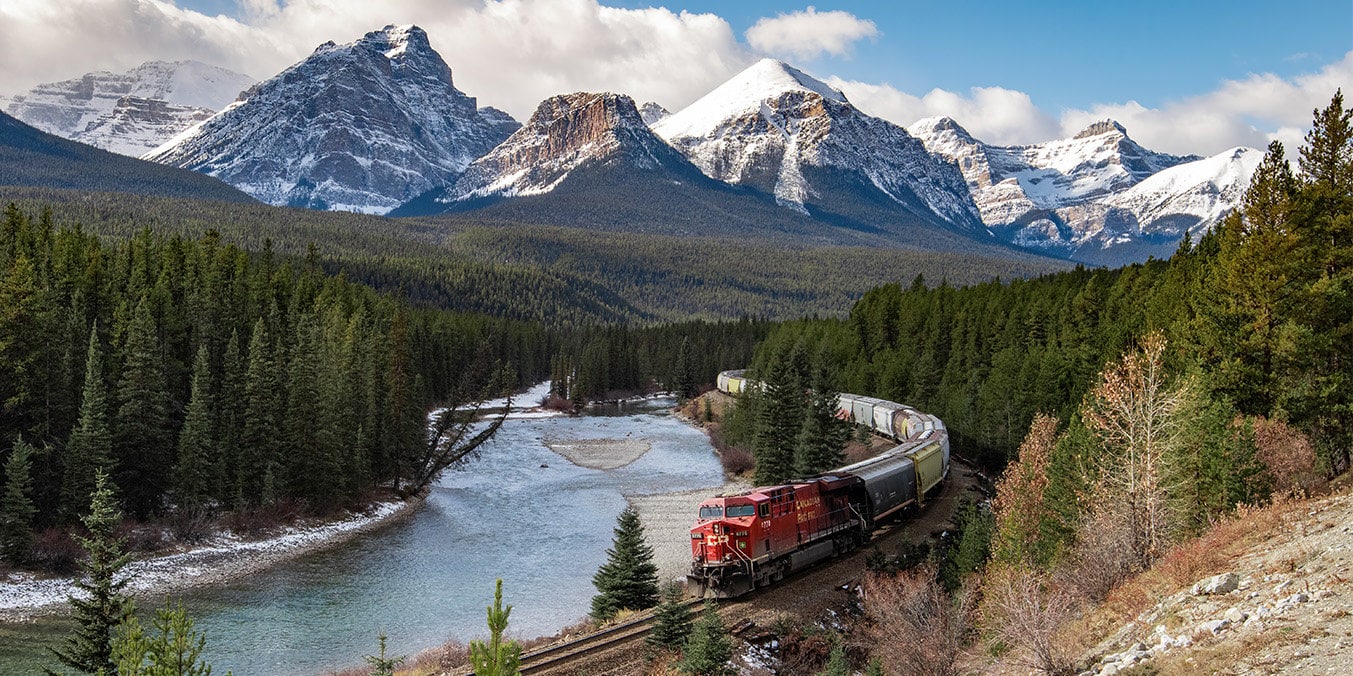
The rise of Banff National Park
1883
At the base of Sulphur Mountain, railway workers William McCardell, Thomas McCardell, and Frank McCabe discovered the natural sulfur springs (now known as the Cave and Basin), which were named after them.
1885
A federal reserve of 26 kilometres in diameter was established around the banff hot springs reserve. In 1887, the domain was expanded to 673 square and became Rocky Mountains Park.
1886
The federal government appointed George Stewart to develop a transportation system, bridges, and services for the natural hot springs reserve as soon as the attraction potential of the springs was recognized.
It was named Banff after “Banffshire,” the area of Scotland where two CPR executives were born, Lord Strathcona and George Stephen.
1887
The Rocky Mountains Park Act was passed on June 23, 1887. The Yellowstone Park Act, passed by the United States Congress in 1881, was adapted for this purpose.
1888
Canadian Pacific Railways began operating the Banff Springs Hotel, which was built log-framed. However, as soon as he saw that the hotel was being constructed incorrectly, William Cornelius Van Horne, head of CPR, immediately built a viewing pavilion for guests.
He stopped by the site during construction and observed that it was incorrect.
1890
A small log cabin was built on the banks of Lake Louise and was soon replaced by a larger chalet.
1892
The Rocky Mountains Park is expanded to include the region around Lake Louise.
1899
The CPR employed Swiss guides to lead explorers to the top of the Rockies.
1900
Bill and Jim Brewster established the foundation of guiding and equipping in Banff. The family ran the region’s transportation system until 1965 when they sold it to Greyhound.
The CPR established the mining town of Bankhead.
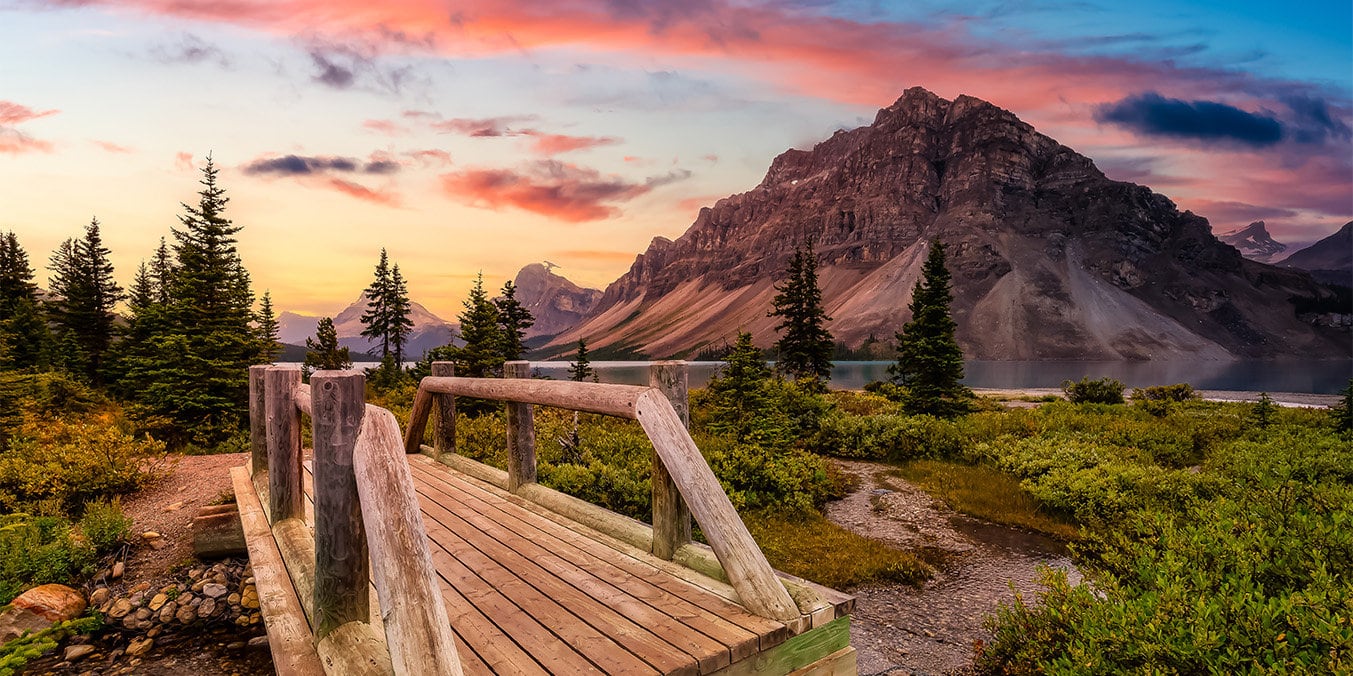
Banff as an international destination
1911
The creation of the Banff/Lake Louise Coach road opened the park to automobile traffic, which had a significant influence on its development.
1921
The creation of the Banff/Lake Louise Coach road opened the park to automobile traffic, which had a significant influence on its development. Cars ushered in the second phase of tourism, which was marked by automobiles.
1921
The road between Banff/Lake Louise was completed.
1923
The first public road across the Canadian Rockies opened as a route between Banff and Radium. This connected with routes to the US to form what Americans called the Grand Circle Tour.
1924
The Rattenbury wing of Lake Louise’s Chalet was destroyed by fire.
1925
The reconstruction of the CPR Hotel at Lake Louise was completed and it was renamed, Chateau Lake Louise.
1926
The north wing of the Banff Springs Hotel was destroyed by fire.
1928
The CPR employed Swiss guides to lead explorers to the top of the Rockies.aThe Banff Springs Hotel’s reconstruction was concluded. The structure appears to be nearly as it does now.
1930
Today’s Canadian rocky mountain parks system is based on the idea of park preservation, which was passed by the National Parks Act and established national park boundaries as they exist today.

Rocky Mountain Park is renamed banff national park
1962
The Trans-Canadian Highway is officially opened. Banff, which had already grown to be the most popular of all the Canadian National Parks, was now being promoted as “the park that can’t be missed.” The expansion and competitive costs of the airlines contributed to Banff’s current status as an international vacation spot.
1984
Banff was designated an area of the Canadian Rockies as a United Nations Educational, Scientific, and Cultural Organization (UNESCO) World Heritage Site in 1984.
1990
On January 1st, Banff proudly became a self-governing community in the province of Alberta.
Current times
As of today, the Banff National Park covers a total area of 6,641 square kilometers. The popularity of the park has soared in recent years, with 8 million people visiting it each year. Today, 92 percent of park visitors arrive by private automobile.
Parks Canada currently employs over 5000 people.
We hope you liked our Banff history lesson 101. If you are interested in moving to Banff, or taking a gap year get in contact! Or read our best hostels in Banff guide.
Nicola Wightman
Nicola Wightman is a regulated Canadian Immigration Consultant (RCIC) under the College of Immigration and Citizenship Consultants (CICC). Her professional immigration consultant number is R706497.
Canadian immigration
Learn about moving to Canada, the Express Entry immigration process, working in Canada, studying in Canada, and more.
April 3, 2024
Super Visa vs Visitor Visa: Understanding the Differences
When planning for your parents or grandparents to visit you in Canada, it can be confusing when…
February 9, 2024
What is Canada known for? Here are 19 things!
What comes to mind when you think of Canada? Hockey? Tim Hortons? Maple syrup? While all of these…
November 24, 2023
Life in Canada vs UK: A Guide for Potential Immigrants
Comparing life in Canada vs UK: Canada excels with its stunning landscapes, welcoming society, and…
Are you ready to get started, or not sure which option is best for you?
Let's get started
Contact Us
We will assess your eligibility for all of the Canadian immigration programs necessary and determine the most suitable option for you.
"*" indicates required fields
